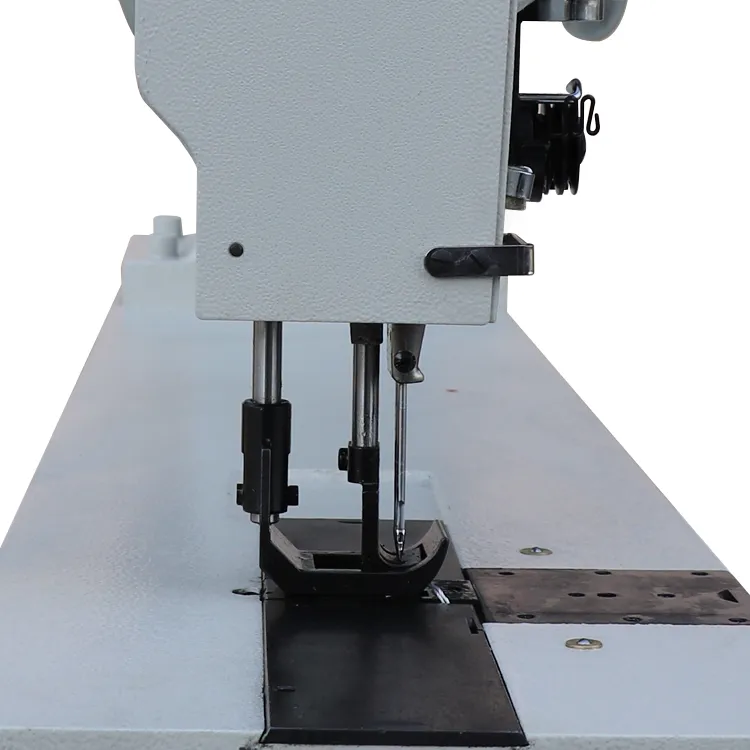Understanding the Functionality and Uses of the Lock Stitch Awl Tool in Sewing
Understanding the Lock Stitch Awl A Tool for Precision in Sewing
The lock stitch awl is a vital tool in the world of sewing, often overshadowed by more commonly known instruments like sewing machines or needles. However, for craftsmen, tailors, and textile enthusiasts, the lock stitch awl holds significant value, particularly when it comes to creating intricate designs and ensuring precise stitching. Its unique design and functionality make it an essential addition to any sewing toolkit.
What is a Lock Stitch Awl?
At its core, a lock stitch awl is a handheld tool used to create lock stitches, which are a fundamental sewing technique where two threads interlock to form a durable and secure seam. This tool consists of a pointed tip that allows the user to pierce through layers of fabric, along with a handle that provides leverage and control. The awl is designed to help guide the needle and thread to ensure the stitches are evenly spaced and tightly secured, making it an invaluable tool for both manual sewing and upholstery work.
Historical Context
The use of awls in sewing dates back thousands of years, with early versions made from materials like bone or wood. Over time, the design has evolved, culminating in the modern lock stitch awl, which is typically constructed of metal for durability and precision. In the early 20th century, as industrial sewing machines became widespread, the lock stitch awl began to fade into the background. However, in recent years, there has been a resurgence of interest in hand-sewing techniques, especially among those valuing craftsmanship and sustainability. This revival has reinvigorated the lock stitch awl's popularity, drawing attention to its unique capabilities.
Advantages of Using a Lock Stitch Awl
lock stitch awl

One of the primary advantages of the lock stitch awl is the control it provides. Unlike machines, which can sometimes lead to uneven stitches, the awl allows artisans to manipulate the fabric more delicately, ensuring that every stitch is placed exactly where it is needed. This is especially beneficial in applications requiring high precision, such as leatherworking or detailed textile projects.
Moreover, the lock stitch awl can be used in various materials, from thick leather to delicate fabrics, making it a versatile tool for different projects. Its ability to create sturdy stitches means that items made with this technique can withstand wear and tear, enhancing the longevity of the finished product.
How to Use a Lock Stitch Awl
Using a lock stitch awl involves a few straightforward steps. First, the user should prepare their materials, ensuring that the fabric layers are aligned correctly. Next, the awl is inserted through the fabric, creating a hole that will guide the needle and thread. The technique requires a rhythmic motion, pushing the awl through while pulling the thread taut to form the lock stitch. With practice, individuals can achieve consistent results with clear and stress-free seams.
Conclusion
In a fast-paced world dominated by machines, the lock stitch awl serves as a reminder of the beauty and importance of handcrafted work. This simple yet efficient tool enables artisans to create intricate designs with precision, providing a sense of connection between the maker and the material. As more people embrace the art of sewing and the value of craftsmanship, the lock stitch awl will undoubtedly remain a cherished tool in the creative world. Whether for repairing garments, creating bespoke items, or simply enjoying the process of hand-sewing, the lock stitch awl is a testament to the enduring nature of traditional techniques in a modern era.
-
Boost Production Efficiency with a Pattern Sewing MachineNewsAug.29,2025
-
Industrial Excellence with the Best Heavy Duty Sewing MachineNewsAug.29,2025
-
Precision and Power with the Best Pattern Sewing MachineNewsAug.29,2025
-
Reliable Bulk Packaging Starts With the Right FIBC Sewing MachineNewsAug.29,2025
-
Advanced Packaging Solutions: Elevate Productivity with Jumbo Bag Sewing Machine and Industrial Stitching EquipmentNewsAug.29,2025
-
High-Performance Solutions for Bulk Packaging: FIBC Sewing Machine and MoreNewsAug.29,2025
-
Maximize Efficiency with an Industrial Cylinder Arm Sewing MachineNewsAug.28,2025


























